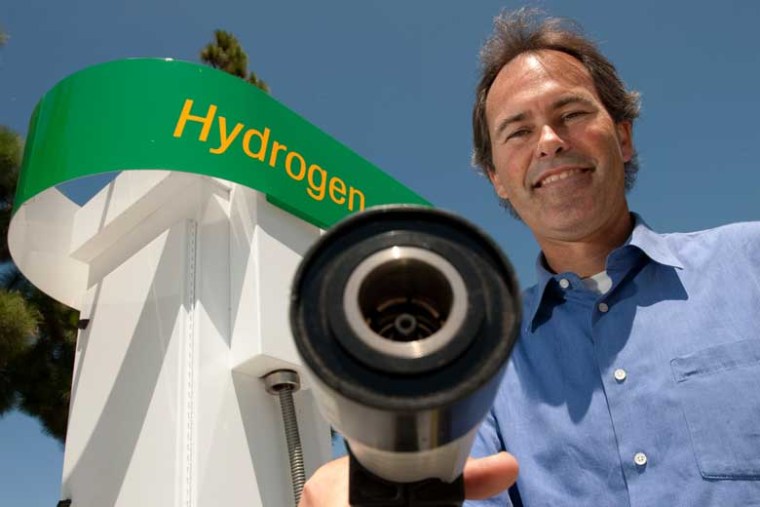An experimental fuel cell at a wastewater treatment plant in California is turning poop flushed down the drain into hydrogen fuel for cars.
The novel fuel cell converts biogas — methane — produced in digesters at the plant into heat, electricity and hydrogen. The heat is fed back to the digesters, the electricity powers the plant, and the hydrogen is fuel for cars.
"It is a technology to generate hydrogen with a very low environmental impact," Scott Samuelson, director of the National Fuel Cell Research Center at the University of California, Irvine, told me today.
The use of stationary fuel cells at wastewater treatment plants and landfills to generate heat and electricity from biogas is nothing new, Samuelson noted, but this is the first demonstration of the technology to generate hydrogen for cars in parallel with the heat and electricity.
Traditionally, stationary fuel cells at wastewater treatment plants take biogas emitted by the digesters (bacteria that feast on sewage) and mix it with hot steam. This breaks down the methane to hydrogen and carbon dioxide.
Next, the CO2 is emitted while the hydrogen is fed into a fuel cell stack that generates electricity and a byproduct of water, Samuelson explained.
More gas
The new system at the Orange County Sanitation District'sFountain Valley sewage treatment plant is fed more biogas than it needs for electricity generation. The excess hydrogen produced when mixed with the hot steam is siphoned off for refueling cars.
"We discovered that by doing that we actually substantially increased the efficiency of the fuel cell so that it produces more energy per unit of fuel going in and it allows that hydrogen to be generated for refueling at almost no energy cost," Samuelson said.
The current system uses a 300-kilowatt fuel cell, though the same type of fuel cell is deployed elsewhere at 1.2, 2.4 and 5.6 megawatts, he noted. So, the process is scalable.
In fact, the so-called tri-generation technology (heat, electricity and hydrogen) should work just as well at landfills as wastewater treatment plants. If so, the collective piles of human waste could "power more than 30 percent of the automobile population" in Southern California, Samuelson noted.
Hydrogen clusters
The novel technology at the Orange County Sanitation District seems fitting for the once-lauded hydrogen highway of the future that has evolved into a series of clusters.
Already, several hundred hydrogen cars are on the road and by 2015 big name automakers such as Mercedes, Honda and Chevrolet plan to have some 50,000 hydrogen-powered deployed in southern California.
Instead of putting hydrogen fueling stations up and down and between the coasts, the government-subsidized industry is putting filling stations where people will buy and drive the cars, explained Chris White, a spokeswoman for the California Fuel Cell Partnership.
"You probably go to the same two or three stations most of the time. We look at the same thing for these fuel cell vehicles," she told me today. "Where do people live, work and play?"
That's where they put what are now called the clusters and one of these clusters is in Orange County, where the new station will officially open on August 16.
"The fact that it's also making hydrogen from sewage is an awesome, awesome, bonus," White added. "We talk about running out of fuel one day, I can tell you we are never going to run out of fuel that's made from [sewage]."
More on hydrogen cars:
- Hydrogen tries to catch up in green car race
- Hydrogen cars ready to roll – for a price
- Honda Clarity's future still looks murky
- LA gas station gets hydrogen fuel pump
Funding for this $8 million to $9 million project was provided by the U.S. Department of Energy, the California Air Resources Boardand the South Coast Air Quality Management District. The station was designed by the University of California, Irvine, FuelCell Energy Inc., and Air Products and Chemicals Inc.
John Roachis a contributing writer for msnbc.com.
